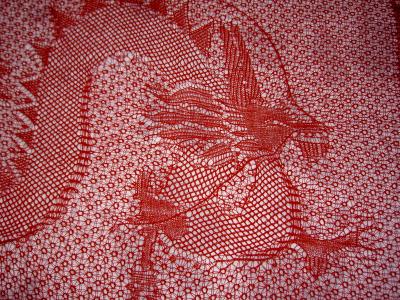
Twisted topological tangles, or: the knot theory of knitting
Imagine a 1D curve, then use it to fill a 2D manifold that covers an arbitrary 3D object – this computationally intensive materials challenge has been realized in the ancient technology known as knitting. This process for making functional 2D materials from 1D portable cloth dates back to prehistory, with the oldest known examples dating from the 11th century CE. Knitted textiles are ubiquitous as they are easy and cheap to create, lightweight, portable, flexible and stretchy. As with many functional materials, the key to knitting’s extraordinary properties lies in its microstructure. At the 1D level, knits are composed of an interlocking series of slip knots. At the most basic level there is only one manipulation that creates a knitted stitch – pulling a loop of yarn through another loop. However, there exist hundreds of books with thousands of patterns of stitches with seemingly unbounded complexity. The topology of knitted stitches has a profound impact on the geometry and elasticity of the resulting fabric. We have developed a formalization of the topology of two-periodic weft knitted textiles using a construction we call the swatch [1]. Using this construction, we can prove that all two-periodic weft knits form ribbon links [2]. This puts a new spin on additive manufacturing – not only can stitch pattern control the local and global geometry of a textile, but the creation process encodes mechanical properties within the material itself. Unlike standard additive manufacturing techniques, the innate properties of the yarn and the stitch microstructure has a direct effect on the global geometric and mechanical outcome of knitted fabrics.